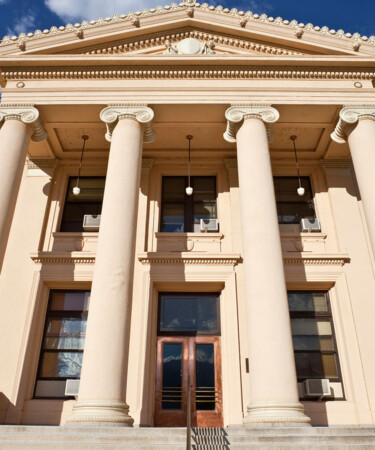The mounting tension in the Napa County wine world has reached a boiling point. On Thursday, the San Francisco Chronicle reported that three Napa Valley wineries are suing Napa County over alleged overregulation. Summit Lake Vineyard, Smith-Madrone Winery, and Hoopes Vineyard have also accused the county of violating nearly a dozen constitutional rights.
In the 60-page complaint filed in California’s Northern District Court, the wineries accuse the county’s policies of being “vague,” “ambiguous,” and costing them millions of dollars in lost profits. Napa County’s deputy county executive officer for communications Holly Dawson told the Chronicle that “the county has not yet been formally served with the complaint, which was released to the media prior to our review. As such, we are unable to comment on a document we have not seen.”
The wineries will be represented by alcohol regulatory lawyer Joseph Infante, who is also currently in the process of fighting for 11 wineries in a similar case in Michigan.
A major factor driving the lawsuit is the staunch restriction on the three wineries’ ability to host visitors and events in their respective tasting rooms, as well as the freedom to offer tastings and serve free samples. The complaint references inconsistencies and changes in the county’s winery database, which catalogs the entitlements of every winery in Napa. Specifically, Summit Lake, Smith-Madrone, and Hoopes were once allowed to host tastings, but those permissions were allegedly stripped away without notification.
In order to get certain rights back, the county has asked its wineries to enter a “voluntary compliance” program, which entails forking over millions of dollars for public improvements and additional lump sums in attorney fees. Further twisting the knife, Napa County now requires that wineries get approval from third parties prior to hosting events, pay the county’s legal fees if a third party files a lawsuit for any reason, and agree to use a specific percentage of locally-grown grapes.
The lawsuit also accuses Napa County of violating free speech on the grounds that the government cannot legally restrict businesses’ rights to commercial speech — which includes marketing and advertising — unless the county has a reasonable pursuit in regulating it. As Napa County does not have clear-cut definitions for the terms “tastings” and “marketing,” interpretation is left to county staff. Without such clarity, the county is able to change its restrictions freely, thus threatening to shut down allegedly non-compliant wineries as it sees fit.
Hoopes Vineyard owner Lindsay Hoopes told the Chronicle that she made multiple attempts to rectify the county’s issues out of court over the years, but that officials neither responded to her requests nor agreed to settle them in person. “There, unfortunately, has been no option but litigation,” Hoopes told the Chronicle. “We have been stonewalled at every angle and it seems like they’re much more interested in winning at all costs and putting us out of business than actually finding the best resolution.”
According to the Chronicle, critics of this movement feel that Napa County should put restrictions on future vineyard development, citing environmental and traffic concerns. Conversely, Napa Valley passed a micro-winery ordinance in 2022 to assist smaller players in the winery space in getting permits, but since then, “only two such permits have been approved.
“It really struck me that there’s a winery in Napa that’s not allowed to have any visitors whatsoever, but the winery next door can have 300 visitors a day,” Infante told the Chronicle. “The government doesn’t tell your neighborhood coffee shop how many customers it can see a day, but for these wineries it does.”
If the court sides with Summit Lake, Smith-Madrone, and Hoopes, the case could very well loosen restrictions for every winery throughout the county, potentially allowing them to usher in more visitors, serve food, stay open later, and host more weddings and events. Tours and tastings are some of the biggest drivers of Napa County tourism and a necessity for wineries to both increase their public relevance and boost their bottom lines.
